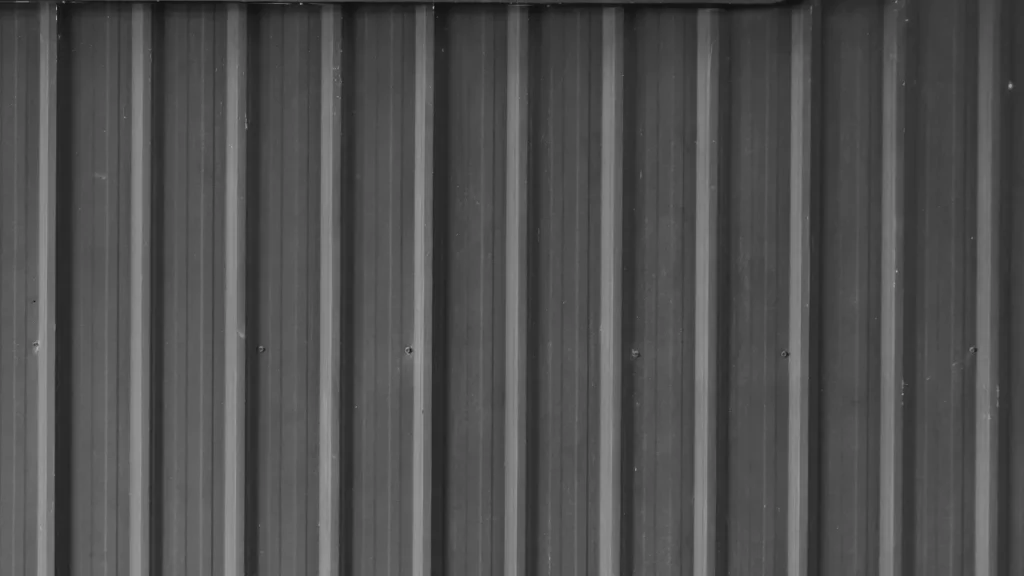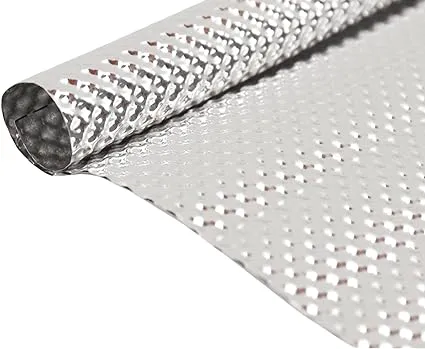Corrugated metal behind wood stove is not just for roofing and siding; they’ve become a popular choice for installing behind wood stoves. The combination of heat resistance, durability, and a stylish, industrial look makes corrugated metal a perfect solution for improving safety and adding character to your living space.
But why is it so effective? And how can you install it yourself?
Let’s dive into the benefits and installation process of corrugated metal behind a wood stove.
Embossed Aluminum Heat Shield Automotive 20” x 27.5”
Benefits of Using Corrugated Metal Behind Wood Stove
Heat Resistance
One of the primary reasons for using corrugated metal behind a wood stove is its high heat resistance. Metals like steel and aluminum are excellent at reflecting heat back into the room while providing a protective layer between the stove and your walls.
This prevents your walls from absorbing excess heat, reducing the risk of heat-related damage or fire hazards.
Fire Safety
Corrugated metal acts as a protective barrier between the heat of the wood stove and your wall.
With wood stoves generating high temperatures, particularly during long periods of use, having a non-combustible material like metal adds an extra layer of safety.
This helps you comply with fire safety regulations and lowers the chances of accidental fires.
Aesthetic Appeal
Beyond the practical benefits, corrugated metal adds an industrial, rustic charm to your home’s interior. It complements the rugged nature of a wood stove while offering a modern edge.
You can customize it to match your home’s décor, whether you prefer the shiny finish of stainless steel or the weathered look of copper.
Easy Installation
Compared to other wall coverings, corrugated metal is relatively easy to install, even for beginners. It can be customized to fit your space, and it doesn’t require complex tools.
With a few basic supplies, you can mount corrugated metal panels behind your wood stove within a few hours.
Cost-Effectiveness
Corrugated metal is a budget-friendly solution. It’s generally cheaper than installing stone or tile behind a wood stove, yet it offers similar benefits in terms of heat resistance and safety.
Its long lifespan also ensures you won’t need to replace it anytime soon.
Durability
Once installed, corrugated metal will last for decades. It’s resistant to rust (depending on the metal type), dents, and wear, making it a perfect long-term solution for high-heat areas like behind your wood stove.
Types of Corrugated Metal Suitable for Wood Stove Installation
Galvanized Steel
Galvanized steel is one of the most popular options for heat shielding because it’s affordable and offers excellent rust protection.
The zinc coating helps protect the metal from corrosion, which is essential in high-moisture environments.
Aluminum
Aluminum is lightweight, affordable, and corrosion-resistant, making it another popular choice.
However, it may not offer the same level of heat resistance as steel, so it’s often used with additional insulation.
Stainless Steel
Stainless steel offers superior heat and corrosion resistance, but it’s also one of the more expensive options.
It provides a sleek, polished look that can enhance modern or industrial interior designs.
Copper (for a more rustic look)
Copper offers a unique, rustic aesthetic that changes color over time due to oxidation.
While it’s not the most heat-resistant option, it’s often used for its decorative appeal in homes where the wood stove doesn’t run continuously.

Preparing for Installation
The first step in installing corrugated metal behind your wood stove is to measure the area where the panels will go. Ensure that the space covers the required safety clearances around the stove.
Based on your aesthetic preferences and budget, choose a corrugated metal that suits your needs. Keep in mind that thicker metals will provide better heat protection but may be more difficult to work with.
For a successful installation, you’ll need:
- Corrugated metal panels
- Wall brackets
- A power drill
- Metal screws
- Tin snips for cutting the metal
- A measuring tape
Step-by-Step Installation Guide
Step 1: Wall Preparation
Ensure the wall behind your stove is clean and free of any obstacles.
If you need extra insulation, you can install a heat shield or fire-rated drywall as an additional safety measure.
Step 2: Installing the Wall Brackets
Install wall brackets or standoffs that will create a gap between the corrugated metal and the wall. This gap allows air circulation, reducing heat buildup and improving safety.
Step 3: Cutting the Corrugated Metal to Size
Using your tin snips, cut the corrugated metal panels to the desired size.
Be sure to wear gloves to protect your hands from sharp edges.
Step 4: Attaching the Corrugated Metal to the Wall
With your metal panels cut to size, attach them to the wall brackets using metal screws. Start from one corner and work your way across, ensuring that each panel is securely fastened.
Step 5: Final Adjustments and Safety Checks
Once all the panels are installed, double-check that the metal is firmly attached and that the clearances between the stove and the wall meet local building codes.
Safety Considerations
The corrugated metal should not be directly in contact with the wood stove. Maintain the required clearance, typically 18 inches, between the stove and the wall for proper heat dissipation.
You can also install a heat shield behind the corrugated metal to further reduce heat transfer and allow for closer clearances if space is limited.
Always consult your local building codes to ensure that your installation meets all fire safety requirements. These codes vary by region, so it’s crucial to follow them to avoid future problems.
Maintenance Tips
Regularly clean the metal surface to prevent dust buildup, which could become a fire hazard. A damp cloth should be sufficient for most cleanings.
Inspect your corrugated metal for signs of rust or corrosion, especially if you live in a high-humidity area. Galvanized steel and aluminum are more resistant, but stainless steel can develop rust over time.
Heat can warp metal over time, so check for signs of warping or discoloration, which could indicate heat damage.
Common Mistakes to Avoid
Installing the corrugated metal too close to the stove can lead to heat buildup and increase the risk of fire. Ensure you maintain the proper clearance.
Not all metals are suitable for high-heat environments. Ensure that you’re using a heat-resistant material like galvanized steel or aluminum.
Failing to anchor the metal securely to the wall can result in loose panels, which may not provide the protection you need. Always double-check the installation.
You May Also Like to Read:
FAQs
Can I use any metal behind my wood stove?
No, it’s important to use a heat-resistant metal like galvanized steel, stainless steel, or aluminum to ensure safety and effectiveness.
How thick should the corrugated metal be?
The thickness will depend on the type of metal, but generally, a gauge of 24-26 is recommended for heat protection.
Does corrugated metal rust over time?
Galvanized and stainless steel are resistant to rust, but regular maintenance is essential to prevent corrosion.
Can corrugated metal reduce heat in my room?
While it protects the wall, corrugated metal actually reflects heat back into the room, making it more efficient.
Is corrugated metal fireproof?
Corrugated metal is not entirely fireproof, but it is non-combustible and highly heat-resistant, making it a safe option behind a wood stove.
Affiliate Disclosure: Fireplaceadviser.com is a participant in the Amazon Services LLC Associates Program. We may earn a commission when you click on certain links on this site and purchase.

Hello!! I am Jamal Khan. I often fix my home electric heaters and gas stove problems and research the common issues in the heating units to improve my knowledge and expertise. The aim of establishing fireplaceadviser.com is to share my expertise and knowledge with my audience.













